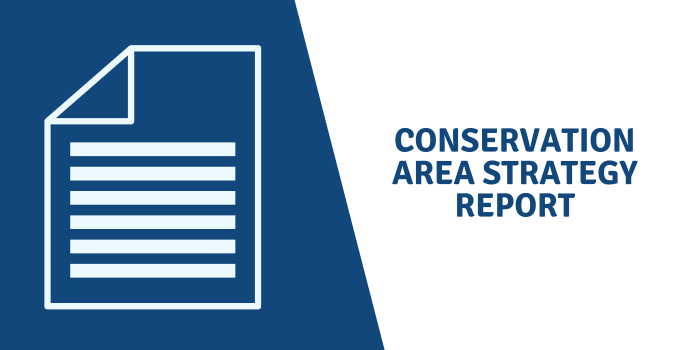Conservation Area Upgrades
We own a variety of natural areas (totaling 30,000 acres) throughout our 6,000 km² watershed for the purpose of preserving and protecting valuable lands and ecosystems. Some of those properties are also our public conservation areas.
Strategy
In order to better manage the areas for public use while still protecting the ecologically diverse and sensitive lands, staff have developed a tiered conservation area plan to help prioritize projects and set goals.
Each area was reviewed and categorized into one of three tiers.
Tier 1: Destination site
- Higher visitation rate
- Higher rate of vandalism and garbage dumping
- Greater amount of infrastructure/maintenance
- Extensive trail systems requiring more frequent maintenance
Outcome: Focus on improving visitor experience and safety which includes additions to infrastructure (new boardwalks, bridges, picnic areas), ease of access trails, interpretive signage and demonstrations, public events, and new trails. Tier 1 sites will also receive more frequent maintenance/repairs to existing trails and structures. Entrance to these locations will require payment through electronic gates.
Areas include Depot Lakes, H.R. Frink, Little Bluff, Macaulay Mountain, Massassauga Point, Potter’s Creek North & South, and Vanderwater.
Tier 2: Local site
- Lower visitation rate – mostly local use
- Not a significant amount of garbage dumping occurring
- Minimal infrastructure
- Simplified trail system
Outcome: Minimal trail and parking lot maintenance and replacement of structures. Additional improvements if funding allows.
Areas include Beaver Meadow, Deerock, Sidney, Sheffield, and O'Hara Mill*
*O'Hara Mill is managed by volunteers.
Tier 3: Natural site
- Not often used by the public
- Very little to no trails
Outcome: Close trails (if any) and let area naturalize. When possible, transfer maintenance duties to municipality if there is a desire for continued resident/public use.
Areas include Demorestville, Flinton, Harry Smith, Newburgh, Colebrook, Bloomfield Mill Pond, Milford Mill Pond, Scott's Mill, Allisonville, Napanee, Portland, Price, Kingsford, Forest Mills, and Rutherford-Stevens.
You can learn more about the conservation area strategy by clicking the report link below.
Revenue
Our public conservation areas rely heavily on user-generated funding (paid parking), grants, and donations in order to be managed and maintained for safe, and accessible public use. Unlike other public parks and outdoor spaces, our conservation areas are not strongly supported through the tax dollars that make up our municipal levy.
Paid parking is the largest revenue source that contributes to daily management and maintenance including, removal of garbage from dumping, clean-up and repairs from vandalism, hazard tree removal, educational/interpretive signage, minor repairs/replacement to small structures, and stewardship projects.
Grants and fundraising efforts contribute to the replacement of large-scale infrastructure like bridges, boardwalks, and picnic shelters; as well as the creation of improved (and new) trails for ease of access. In addition, demonstration sites may also be funded this way.
In some cases, revenue streams may be combined in order to complete larger projects.
Visions and Goals for Conservation Area Improvements
Working with a landscape architect, staff have identified a series of long-term visions (mostly for Tier 1 areas) that align with Quinte Conservation’s strategic direction (2021 – 2023).
The short-term goals include area improvements that have the potential to be completed within a five to ten-year timeline given that the financial support is available and that all permits and approvals have been obtained.
The long-term visions are bolder, large-scale projects intending to completely revitalize the areas for eco-tourism and public use.
Below, you can view the current short-term goals that are available for select areas and provide feedback on the suggested goals to our staff.














